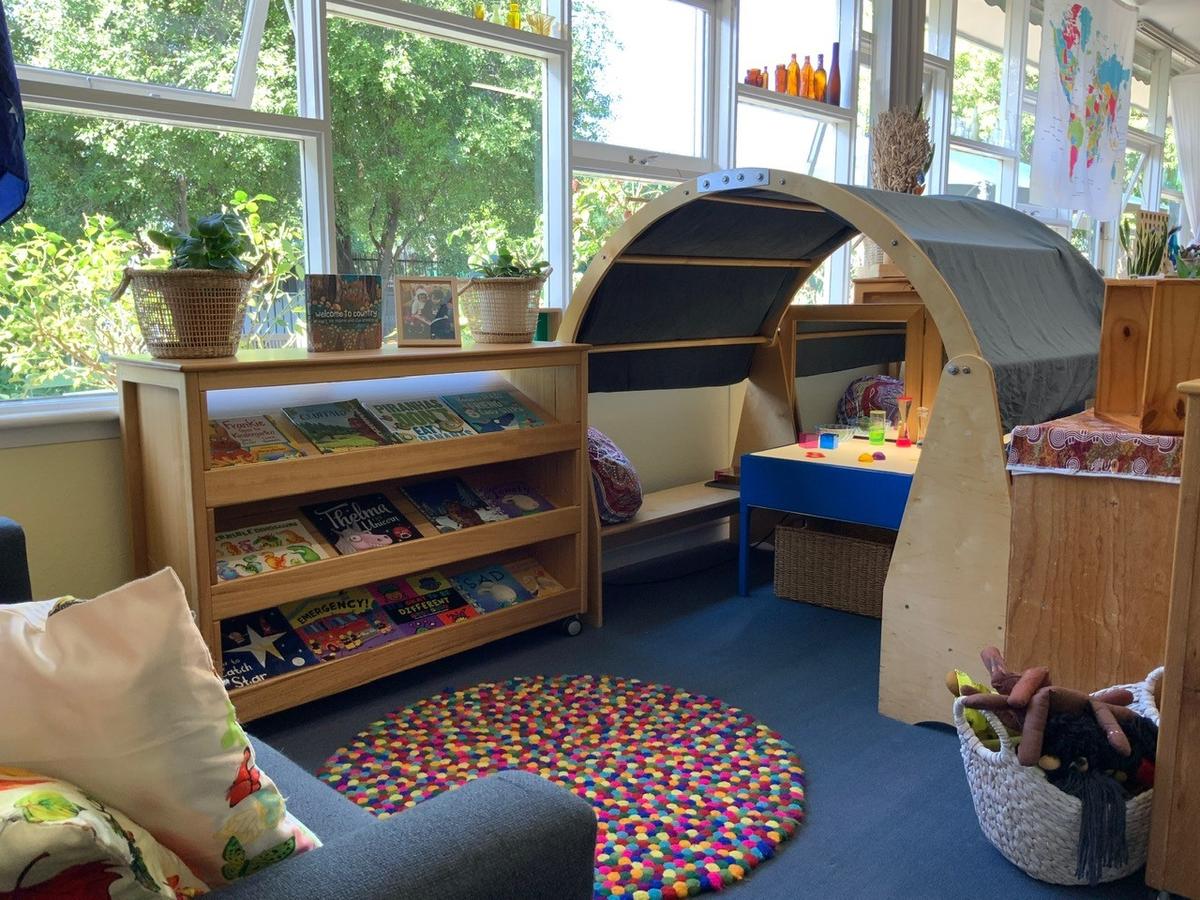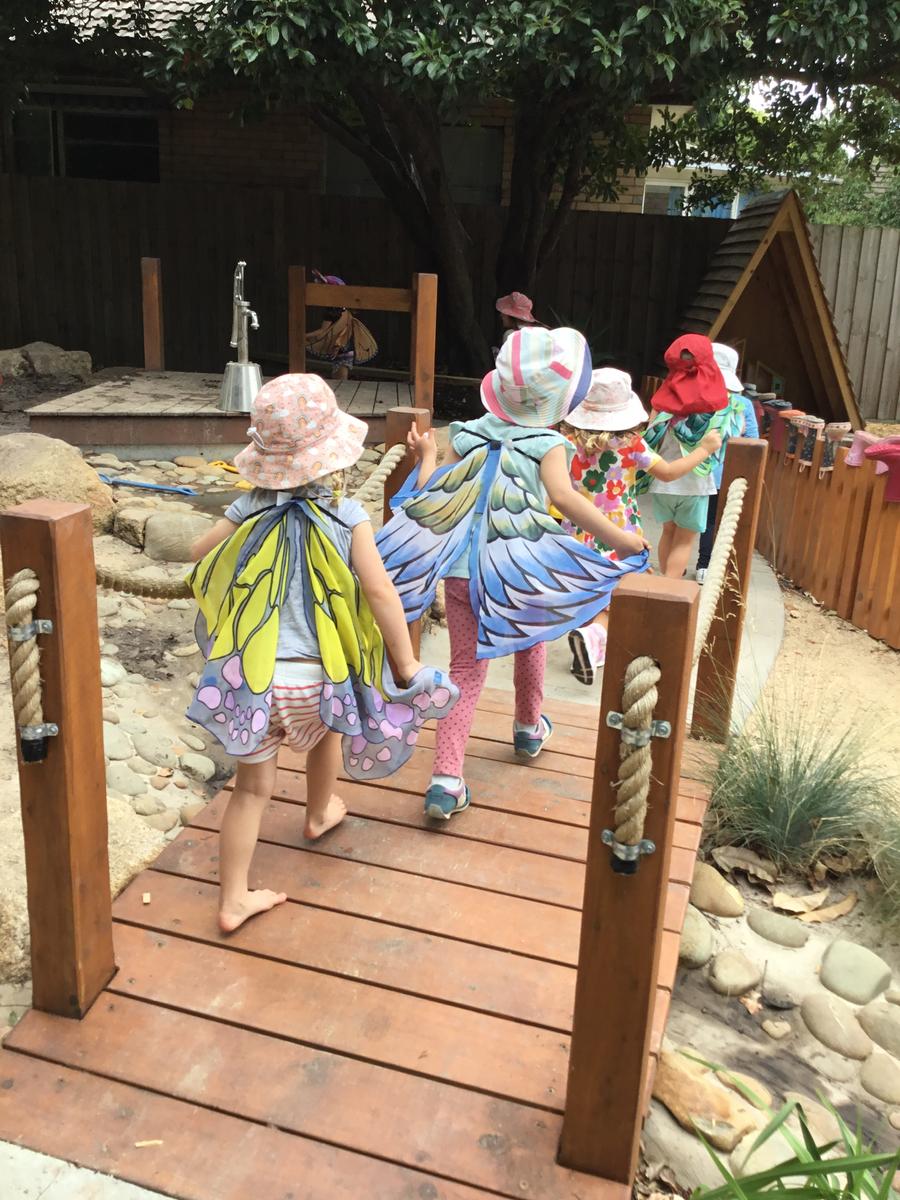Glen Education Centre Road

Evolving Learning Environments
By Amy Rodgers, Tori Cooper and Rochelle Ancora, Glen Centre Rd Educational Team
When we provide a rich and varied learning environment, we are supporting each child to grow in their learning and development. A positive learning environment can give children the confidence to explore and learn in a secure and safe space that offers different challenges, both indoors and outdoors.
At Glen Centre Road Kindergarten, the educational team spend time critically reflecting on all the areas in our learning environment endeavouring to create multiple spaces which support the interests of children and caters to their abilities and sense of agency.
We understand the need for choice, exploration and experimentation. This can only be achieved if the children have access to a variety of resources, and we continually reflect upon what might need to change as the interests and developmental needs of the children change. We cater for different learning styles and acknowledge the individual way that each child learns. We invite children and families to contribute ideas to our program and we invite families to celebrate the rich cultures we have at Glen Centre Road Kindergarten.
With many different experiences set up each day, we recognise the different choices that each child will make in the progression of their learning. The children are provided opportunities to repeat and practice previous skills developed, as well as engage with new learning. The educational team recognise the individual learning styles of each child and provide a wide variety of activities to choose from all around the room. We provide spaces which allow for quiet small group play, and large open spaces which allow for bigger play such as construction or climbing outdoors. We intend to provide enough resources and learning spaces which cater for all children in the group. With so many different interests amongst the groups, we strive to create the best environment for everyone.
We seek feedback from our community about our program and we strive to always improve. We understand that family is the child’s first teacher, and we recognise the crucial role that our wider community plays in our kindergarten setting.
A well-designed physical environment supports and give educators opportunities to “be” with each child and listen to children’s interests and ideas and explore these further. It provides opportunities to build strong connections with all our educational team. We are able to think more deeply and critically reflect on all our learning.
Through conversations, observations and reflections about what we have been exploring, we acknowledge and understand that we play an important role in inspiring new learning and advocating for change within our learning environment. Our resources are flexible and allow for open ended learning, allowing the children to take the lead in their learning and discovery and decide the direction in which they want to learn.
What are the 5 learning outcomes of the Early Years Learning Framework and how do we apply it to our learning practices?
Outcome 1: Children have a strong sense of identity.
Our family project book, 'All About Me', where children and families are invited to share what is important to them, their interests, culture, and global connection - is sent home with each family across the year. This project has provided an opportunity for children to celebrate who they are and connect a sense of identity through conversations with peers and educators and the broader community. This book is available for all families and children to look through and explore the wonderful diversity in our learning community and inspire what we add to our program.
Outcome 2: Children are connected with and contribute to their world.
Our Landcare Grant: Through the Land Care project, we have been able to connect with the outdoor environment, weeding, planting, and taking care of the new flora we have added around the yard. The children have been connecting to the environment, learning how to show a growing appreciation and care for nature, and to develop an awareness of the impact of human activity on environments and the interdependence of living things.
Outcome 3: Children have a strong sense of wellbeing.
Encouraging independence: We do this by supporting children to take care of their belongings, put on their own shoes and socks, and to think about what clothes or protection they need based on the weather outside. We are always here to help, but we promote independence by offering verbal support and encouragement, explaining the procedure step-by-step, and offering physical assistance when necessary. We are also supporting children to develop interoceptive awareness by helping them to identify how their body feels and what their body needs – so they can recognise body states such as hunger, thirst, tiredness and toileting needs, and emotional states such as anger, fear, sadness, happiness and joy.
Outcome 4: Children are confident and involved learners.
Exploratory play: Providing items that allow children to explore, predict, hypothesise, problem solve, and think creatively help children to develop positive dispositions for learning. This can be seen in scientific explorations with water where children need to transport water from container to container through small tubes, or when they try to create a boat that will float down our outdoor creek bed. It can be seen in the block area, where children build the tallest tower they can, with a strong enough foundation that it won’t collapse. It can even be seen in our puzzle area, where children collaborate on difficult puzzles, coming up with strategies in order to achieve success.
Outcome 5: Children are effective communicators.
Developing knowledge of Art and the ways that meaning can be conveyed through Art: The children have engaged in many opportunities to explore Art and how different artists have influenced our past histories. The children have been given opportunities to find their individual way to explore these artists and develop their own individual style and interpretation. The children learn language of art and how they can describe what they have created.


